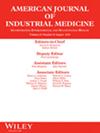Citizenship Status and the Family and Medical Leave Act: Examining Inequities in Eligibility Among Hispanic Workers
Abstract
Background
The Family and Medical Leave Act (FMLA) is the sole U.S. policy protecting job security during medical or parental leave. We extend prior work by analyzing overall FMLA eligibility by citizenship and gender among Hispanic workers. We examine which criteria—employer size, job tenure, and minimum work hours—drive citizenship disparities. We also investigate the factors predicting FMLA eligibility and examine the population-level characteristics contributing to FMLA citizenship disparities.
Methods
We used the 2018 Current Population Survey (n = 5632) to compare FMLA eligibility by citizenship status among Hispanic foreign-born workers by sex. We used multivariate linear regressions and Blinder-Oaxaca decompositions to investigate citizenship inequities in FMLA eligibility.
Results
Findings showed eligibility disparities: 38.9% of noncitizen men and 42.2% of noncitizen women met FMLA criteria compared to over half of their citizen counterparts. For men, this disparity stemmed primarily from differences in employer size, with less than half of non-citizens working for eligible employers. For women, both employer size and job tenure contributed to the ineligibility. Decomposition analyses showed that educational and occupational differences explained roughly half the employer-size citizenship disparity among men. Among women, occupation, full-time status, and education accounted for 85% of the employer size disparity. Age, residency duration, and full-time status explained nearly 75% of the job tenure citizen gap.
Conclusions
The FMLA's design excludes Hispanic non-citizens during critical life events. Addressing occupational segregation and educational barriers and modifying eligibility criteria are crucial to mitigating these disparities. A national paid family and medical leave policy is urgently needed.

 求助内容:
求助内容: 应助结果提醒方式:
应助结果提醒方式:


